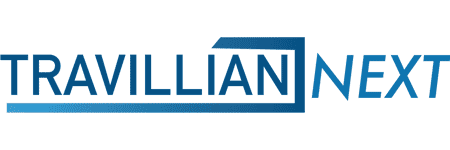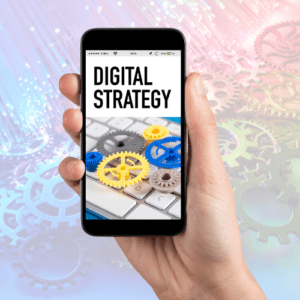What sets community banks apart from superregional and global banks is the personal touch. However, these banks often struggle to provide a consistent customer experience—requiring large front lines and operations staff—while maintaining low efficiency ratios. For several years, there has been much talk of boosting productivity with robotics and other technologies. “Technology can increase efficiency by automating manual processes, assist in identifying emerging threats, and provide insights into risks and their causal factors,” Deloitte noted in December 2019. “Robotic process automation (RPA), for instance, can be used to reduce human error by flagging exceptions in large data sets.”
Until recently, however, large-scale investments in robotics and data science products were largely limited to large US and international banks (BofA, Chase, BMO, Deutsche Bank, BBVA, Caixa Bank and Bank Leumi, to name a few). Over the past couple of years, we have begun to see US regionals and superregionals like Huntington, Fifth Third, US Bancorp, BB&T and SunTrust also embrace these technologies. Recently, we have even seen these considerations factored into large community bank M&A deals. For example, of the six items listed as growth priorities in their MoE announcement last November, First Horizon and IBERIABANK listed four related to fintech: digital and mobile strategies; data analytics; technology infrastructure; and artificial intelligence and robotics.
But what of the < $10B community bank? In the face of the pandemic, as we enter a new credit cycle, efficiency matters more than ever. Thus, by extension, so do robotics. We sat down with Sean Willett, Chief Administrative Officer of Five Star Bank ($4.6B; Warsaw, NY), to learn more about how robotics and other technologies factor into his bank’s strategy.
TTG: Tell us about robotics at Five Star Bank. How did you get started?
Sean Willett: We examined low-value, repetitive activities and how to automate them and from there hired a robotics expert to be the “Orchestrator of the Robots”. As a community bank, we can’t invest heavily in technology, like Chase or Bank of America does. Robotics is a cost-effective way to automate manual processes or inefficiencies between systems without a huge investment. The other challenge, given that we’re a somewhat rural bank, is talent acquisition. Hiring developers is not in our DNA. However, a robot can work 24 hours a day, seven days a week, and it costs $8,000 annually. An FTE at the lower end of the comp spectrum could be $40,000 to $50,000, and they’re not available 24/7.
TTG: What are these robots doing and who provides them?
Sean Willett: We partnered with UiPath, a leader in the field. We started with simple low-value activities, thinking, “Let’s prove we can get the basics down. From there, we can shift to more complex activities like reconciliations.” Quality control of data and documentation, and the movement of data across systems sounds straightforward until you add up the time of the people who do it. With the help of the Lab Consulting, we completed a very detailed process-mapping across critical functions and all lines of business and functional areas to understand where low-value, repetitive activities occurred and went from there.
TTG: The story of the year was the PPP rollout. What role did robotics play for Five Star?
Sean Willett: Robotics was a homerun. We used a third-party (Lendio) to accept applications digitally. We built our own bot, which handled paper and Lendio applications and loaded them into the SBA portal. That process can take anywhere from 15-30 minutes depending how seasoned your team is. We were able to cut that to 3 minutes on average. Then, our robots took that information, prepared closing documents, and facilitated the process all the way through to booking the loans, which saved us considerable time and effort. Essentially, we built a lending factory for PPP loans, and can now do this across all loan products.
For example, say a residential loan processor receives 10 loan applications, five of which are incomplete. They have to spend the same amount of time figuring out if they’re good or not. If they’re not, there’s a process in which they must return to the MLO and ultimately the customer. They’re in suspense, whereas the robot can QC them quickly, kick the bad ones out, and move the good loans through the pipeline. All in, our average cycles are about 50 days. We can cut that significantly by nearly 13 days by putting this robot in place and fine tuning and accelerating it.
TTG: Where else have robots created efficiencies during the pandemic?
Sean Willett: Pre-COVID, we were paper heavy. By having 70% of our workforce distributed, we’ve moved to a more paperless organization, which has created other efficiencies. Most notably, we don’t have to move paper through the loan process. If you think about all touch points in residential, not only internal to the bank but also closing attorneys and the like, it’s an inefficient process that we’ve streamlined not only with robotics but also by going to more electronic means of transferring information.
TTG: To become truly efficient, you have to get more efficient in your use of data, too. What are the challenges there?
Sean Willett: A big challenge for smaller financial institutions is an outsized reliance on core providers. Kearney Consulting, and others, are suggesting the need for the next generation of core that moves away from “closed” model of traditional providers, is more flexible in creating a digital ecosystem both for the customer and the enterprise, and doesn’t impede the flow of data through the enterprise. This improves customer experience while increasing efficiencies. Radius is a prime example, as they decided early on their legacy core provider wasn’t suited for their digital journey. They exited their legacy core provider went with Q2. We use Q2 as our digital banking platform, where they went with it as their core. Radius partnered with Mantl and other fintechs to create a robust ecosystem around their customers and operations. Their model became so attractive that Lending Club bought them.
TTG: When we talk about data and robotics, people get scared about losing their jobs. How can they be beneficial to your workforce?
Sean Willett: You want to understand the errors that are generated by your lines of business, what’s causing them, and then how to fix them. You’ll find you’ve hired people to do jobs based on bad data, performance variances and the like. Data is a critical component of performance dashboards that let us measure to the person who’s generating errors and what the errors are. So, we first use this for coaching. If that doesn’t work, we might move the person into another role they are better suited for and if that doesn’t work, perhaps it is an exit scenario. As I said, we also use that data to understand what’s happening across the organization to automate away low-value, repetitive processes. Then, your associates can focus on things that matter, like customer experience, operating in a way that accounts for risk, compliance, etc. That said, when employees see how much of their time is spent on low-value, repetitive activities versus more rewarding customer engagement or value-added tasks, they see the value of robotics and are the first to identify opportunities for improvement.
TTG: Let’s talk more about using data at an organizational level. The pandemic has likely impacted your branch network strategy. How has data helped you make decisions?
Sean Willett: Starting in summer of 2019, we began to rethink our branch footprint and the role that branch banking plays now and going forward in the overall platform. We’re considering creating flex offices, where we can facilitate 80% of customer needs in a branch using interactive teller machines supported by live, video chat. This frees up the branch banker to provide service to customers with more complex needs, e.g., mortgage/HELOCs, retirement or educational savings planning, to name a few. Additionally, we’re examining how we can utilize our retail platform for wealth management, our insurance and business banking. That’s not uncommon across the industry. But the point is, banks have less need for centralized space, and we’re looking at every branch as an opportunity for a multi-use office.
Still, we have to decide where to locate our branches, and that goes back to data. There are two sets of data. There’s idiosyncratic data. How’s the branch performing? How much customer traffic is coming into the branch? What are the loan trends? What’s the profitability of respective branches? Then, there are the market demographics. We look at traffic patterns, census data, and proximity to small businesses. Are small businesses in the area growing and what’s the growth profile? What’s the age demographic, the proximity to higher education, and the like? Utilizing all that data, we scored the branches. From there, we make decisions about what made sense.
TTG: You mentioned ITMs. Can you tell us about the economics around them, how useful they are to you now during the pandemic—for example, in terms of social distancing—and what the long-term benefits are?
Sean Willett: ITMs are more expensive than traditional ATMs, because of the enhanced functionality and video capabilities. They’re $70,000 or $80,000 per unit, depending on how you deploy them. Are they worth it? To your point about social distancing, a person can enter a branch and engage with a human but through a video. We see each other, and I can walk you through your transaction. If you need me to come out in person, I can, but if you’re uncomfortable we can maintain our boundaries. For now, some customers would rather wait 20 minutes in drive-throughs with wide-open ITM lanes where they could do things instantly. As people become more accustomed to them…think of self-checkout lanes in supermarkets. Did you use them when they first came out? You probably gravitated toward the cashier until you got the hang of the self-checkout. Now, you may never go to a cashier.
TTG: In recent years, banks have looked to M&A to reduce redundancy and inefficiency. Are you considering M&A opportunities for that purpose this year?
Sean Willett: The environment for M&A is challenging for a number of reasons, but to answer your question, we expect more improvement in efficiency from the topics we have already discussed today—cost-effective automation using robotics, more effective use of data to drive organic growth through analytics and efficiency using performance dashboards, et cetera—than we do from M&A deals.
The Travillian Group’s Banks and Credit Unions practice provides Search and Talent Advisory (TTG|Align) services to depository institutions across the country. Established in 1998, the firm has built a unique platform that touches every corner of the industry.
Our search and advisory professionals focus on building long-term, trust-based relationships with Boards, Executives and HR professionals. They assist our clients in the hiring of high quality, hard to find talent and provide full-life cycle consulting in such areas as succession management, leadership development, employee engagement, recruitment strategies and compensation.



